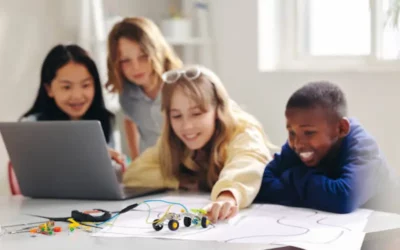Robotics is an exciting and rapidly expanding field that is growing in popularity among kids. With the rise of technology, robotics for kids has become an essential tool for young learners to develop their engineering, coding, and critical thinking skills. It provides a creative outlet to explore their interests while teaching them valuable life lessons.
In this blog, we will cover everything you need to know about robotics for kids. From understanding what robotics is and its importance to exploring different platforms and resources available for learning, we’ve got you covered.
We’ll also discuss the benefits of learning robotics early, the right age to start learning it, how your child can learn robotics outside of school, and some fun activities and projects for your kid. Join us as we dive into the exciting world of robotics for kids!
Before diving into the blog, You can check out the video.
Table of contents
- Introduction to Robotics for Kids
- The Basics of Robotics for Kids
- Understanding Robotics for Kids
- Learning Robotics Concepts Through Coding
- Choosing the Right Age to Learn Robotics
- Top Educational Robotics Platforms for Kids
- The Best Resources for Learning Robotics for Kids
- Should robotics classes be included in school?
- Alternative Ways Your Child Can Learn Robotics
- Exciting Robotics Projects for Kids
- Fun Activities to Learn Robotics for Kids
- Conclusion
- Frequently Asked Questions
Introduction to Robotics for Kids

Robotics is an exciting and interactive way to introduce STEM education to kids. Its develop creativity, problem-solving critical thinking skills for kids by building robots. Robotics competitions allow kids to showcase their skills while having fun competing against others.
In addition, robotics can teach real-world challenges, such as environmental issues or medical advancements. This makes robotics a fun activity for kids and a valuable learning experience that prepares kids for future careers in technology.
What is Robotics for Kids and Why is it Important?
Introducing robotics to kids is an excellent way to enhance science, technology, engineering, and math (STEM) education. But first of all, we need to understand what is robotics for kids. Robotics for kids typically involves programming and building robots using various tools and techniques. It helps children develop critical thinking, creativity, problem-solving, and teamwork abilities.
Additionally, it gets them ready for a career in high-demand STEM subjects. Early exposure to robotics can give youngsters a competitive edge and better prepare them for future challenges. Teaching youngsters about STEM with robotics is an exciting and participatory method to make learning entertaining.
Benefits of Learning Robotics for Kids
The benefits of learning robotics for kids are numerous. One of the primary advantages is that it helps develop problem-solving skills and improves creativity. Robotics classes can provide children with the opportunity to use their imagination and come up with ideas for building and programming robots.
Moreover, exploring STEM subjects in a fun and engaging way can enhance critical thinking abilities and boost confidence, which can have long-term positive effects on a child’s education and career prospects.
Another significant benefit of learning robotics is that it allows children to learn about coding and electronics basics while building robots. These skills are becoming increasingly necessary today, where technology is essential in many industries.
Robotic classes enable teamwork development by providing social learning environments where kids get to collaborate with others. The benefits of learning robotics make it a valuable investment in a child’s future.
The Basics of Robotics for Kids
Robotics is a fascinating field that integrates STEM disciplines to build intelligent machines capable of carrying out various activities. Young children can develop their problem-solving abilities, curiosity, and passion for STEM fields by being exposed to the fundamentals of robotics.

Designing, constructing, and programming robots are the fundamental components of robotics. Kids can begin by learning about the various parts of a robot, such as the motors, sensors, and actuators. They can investigate how these components combine to allow robots to move around, sense their surroundings, and interact with them. For this process, you must have a basic understanding of electronics, mechanics, and programming languages.
Robotics heavily relies on programming. Kids can start by studying simple programming languages like Scratch, which provides a visual and user-friendly environment. They can program robots to perform particular tasks and react to various inputs. They can study more advanced programming languages like Python as they improve because they offer more flexibility and control.
Learning robotics foundations requires doing practical exercises. Kids can begin by creating simple robots out of kits that include ready-made components and building instructions. These kits frequently feature motors, sensors, and other easily assembled table parts. Children who are given step-by-step instructions can learn the fundamentals of how the many components fit together and function as a unit.
Kids can graduate to more challenging projects as soon as they have a strong foundation. They have the creativity and problem-solving abilities to create and build their robot designs from the ground up. They can experiment with various sensor kinds, learn about the uses of robots in other industries, such as healthcare or agriculture, and even participate in robotics tournaments to demonstrate their abilities.
Understanding Robotics for Kids
Robotics is a fascinating field that can provide children with an exciting and engaging learning experience. It can also help them develop problem-solving, critical thinking, and teamwork skills that will serve them well in their future careers. Understanding robotics for kids involves exploring the different tools, technologies, and concepts used to build and program robots.
With various robotics kits for kids available of different ages and skill levels, there has never been a better time to introduce your child to this exciting field.
Furthermore, robotics competitions and events provide opportunities for kids to showcase their skills and learn from others in the field, making it an exhilarating experience overall.
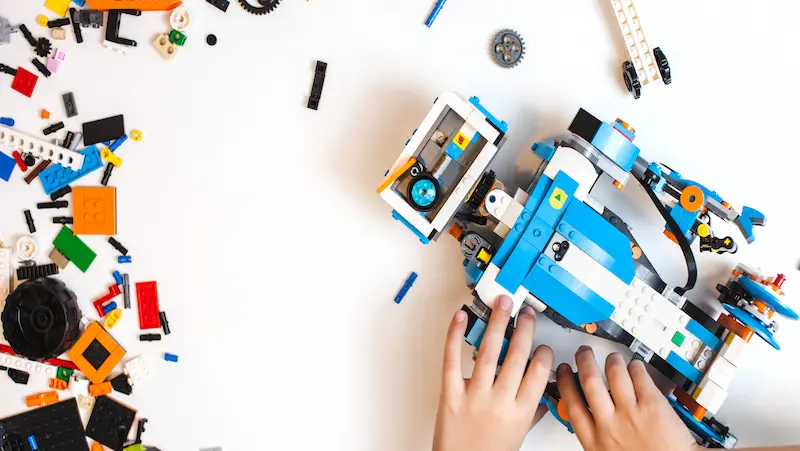
What is a Robot and How Does it Work?
A robot is a machine that can be programmed to carry out specific tasks, either autonomously or through remote control. These machines have sensors and actuators such as cameras, motors, and wheels, enabling them to interact with their surroundings and complete various tasks.
Programming is the key to determining how a robot behaves and carries out its activities. Robotics for kids plays a vital role in developing problem-solving skills, critical thinking, and creativity while also increasing their knowledge of coding and electronics. By introducing children to robots, they better understand how they work and the potential applications of robotics in everyday life.
Applications of Robotics for Kids
Robotics can be used in various applications beyond simple entertainment and education. With the help of robotics, kids can develop skills required in the healthcare, agriculture, and manufacturing industries.
For instance, robots can help farmers plant and harvest crops more efficiently or assist doctors during surgeries by providing accurate data.
Additionally, learning robotics can give children a head start on understanding future technology, which will become increasingly critical as they age and enter the workforce. By learning how to program robots to perform specific tasks, children can hone their critical thinking and problem-solving abilities, which are essential skills for any career in the 21st century.
Learning Robotics Concepts Through Coding
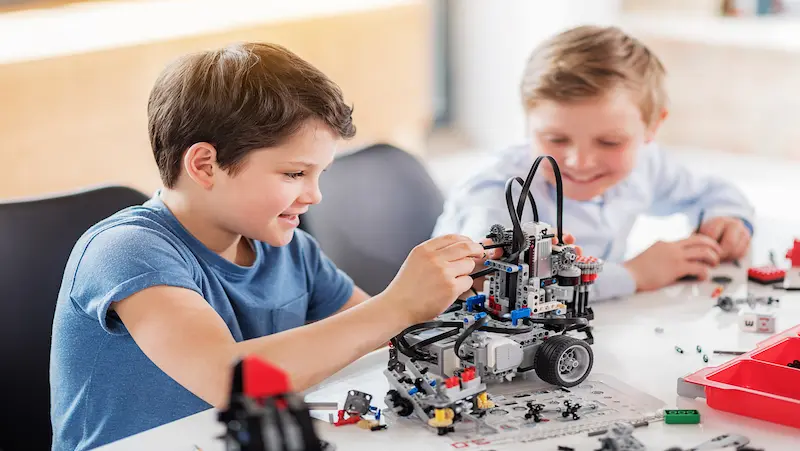
Coding is an essential part of learning robotics. It teaches children how to program robots and gives them hands-on experience with building and controlling machines. Kids can develop problem-solving and logical thinking skills critical for robotics through coding. Kickstart your Robotics journey with BrightChamps‘ fun and engaging classes.
BrightChamps’ specially designed curriculum makes learning programming simple for students in grades 1 through 12. It also teaches a variety of additional programs that help children develop a foundation in robotics, and computer programming through activities, interactive lessons, and other means.
In addition, robotics allows kids to unleash their creativity and innovation while inspiring them to pursue careers in STEM fields. By practically learning coding concepts, kids can be confident in creating unique projects and further developing their skills.
The Relationship Between Coding and Robotics for Kids
Coding and robotics are intimately connected, with coding being the language that allows robots to perform complex tasks. Kids can program robots to do various things by learning to code, such as following simple commands or navigating mazes. Kids learn the fundamentals of robotics through coding, such as programming sensors, controllers, and motors.
Coding also helps improve problem-solving abilities and logical thinking skills in children who aspire to pursue a career in technology or engineering. With the proper guidance and resources, kids can gain valuable practical experience with robotics and take their first steps towards a rewarding future.
Essential Coding Skills for Robotics for Kids
Learning coding skills is an integral part of robotics education for kids. Coding empowers children to program their robots to perform specific tasks and functions. It helps them develop various skills, such as:
- problem-solving
- logical thinking
- creative abilities through practice
Initially, kids can start with simple coding languages like Scratch or Blockly before moving on to more complex ones like Python or C++. Robotics education through coding promotes STEM learning and prepares children for future careers in technology. By learning to code for robotics, kids can take the first step towards a bright future in engineering and technology.
Choosing the Right Age to Learn Robotics

Introducing children to robotics early can be a fantastic learning experience. However, choosing the right age is essential to ensuring optimal results. Younger children between the ages of four and six can learn basic robotics concepts through play-based activities that promote creativity and imagination. Check out BrightCHAMPS’s uniquely designed curriculum for students in grades 1 – 12 which makes learning fun and fruitful!
For more structured learning, introducing robotics education between the ages of seven and ten is ideal. Older kids and teenagers can explore more complex robotics concepts, coding languages, and applications. Choosing age-appropriate materials and kits is crucial for making learning fun and safe for kids of all ages.
Factors to Consider When Choosing the Right Age
Early childhood learning is good for effective growth in specific subject. When it comes to selecting the right age for kids to start learning robotics, there are several factors to consider. Children as young as five can develop problem-solving and logic skills through interactive robots and games. However, choosing age-appropriate kits and activities that keep children engaged and interested in the subject is essential.
Parental involvement is crucial to nurturing children’s interest in robotics education. As children grow older, they can progress to more advanced robotics kits that teach coding and engineering skills. Ultimately, the goal is to provide a safe and supportive environment that fosters creativity, curiosity, and a love for learning.
Recommended Age for Learning Robotics
When it comes to learning robotics, there is no magic age that works for everyone. However, most experts recommend waiting until children are 8 to 10 years old before moving on to more advanced concepts and programming languages. At this age, they have developed the necessary cognitive skills and can handle more complex projects.
Moreover, it’s essential to consider a child’s interests and abilities when choosing the right age to start learning robotics. Younger children can begin with more straightforward concepts through play-based learning or interactive robots, while older children may benefit from more challenging kits that teach coding and engineering skills.
Ultimately, the best approach is to choose age-appropriate kits and activities that keep children engaged and motivated.
Top Educational Robotics Platforms for Kids
When it comes to educational robotics platforms for kids, there are several options available on the market. Each platform is designed with unique features and capabilities, catering to different age groups and skill levels.
- BrightCHAMPS
BrightCHAMPS provides a selection of different classes for students to pick from. In order to get the best possible results for learning, the curriculum has been designed specifically for each age range. The platform gives children access to an incredible variety of resources and materials, which enables them to construct a strong foundation in robotics. Start your experience with robots off right by signing up for a free trial today!
Lego Mindstorms is a popular choice that offers a range of robot-building and programming activities. Lego robotics for kids is a great way to kick-start the robotics journey.
VEX Robotics provides a comprehensive range of kits, including entry-level to advanced options, allowing children to progress as they develop their skills. Dash and Dot are an interactive duo of robots that use visual language for programming.
A tablet or smartphone can control the programmable ball-shaped robot Sphero Bolt. Lastly, Ozobot introduces children to coding through interactive games and challenges using its small, programmable robot.
These platforms offer exciting opportunities to learn robotics in fun and engaging ways, inspiring curiosity and creativity while developing essential skills such as critical thinking, problem-solving, and collaboration. They are ideal for children who want to explore the world of robotics further through the school curriculum or extracurricular activities.
2. Arduino Nano
The Arduino Nano is a small and affordable microcontroller board that offers an excellent introduction to the world of robotics for kids. With its user-friendly interface and plenty of online resources, it is easy for children to learn how to program robots that move and respond to their environment.
The versatility of the Arduino Nano helps kids explore different aspects of robotics, from controlling motors and sensors to building interconnected machines. Beyond developing technical skills, working with the Arduino Nano fosters creativity, problem-solving abilities, and innovation in young learners. Overall, the Arduino Nano is an invaluable tool for getting kids interested in robotics while providing a solid foundation for more advanced projects down the line.
3. BBC micro:bit
The BBC micro:bit is a versatile and user-friendly robotics platform perfect for kids interested in robotics and coding. With its sensors, buttons, and LED lights, the micro:bit allows for endless possibilities when building robots, creating games, or experimenting with different programming concepts.
Its ease of use makes it an excellent tool for introducing kids to robotics and coding. The BBC micro:bit offers children an engaging and interactive learning environment where they can share their projects, learn from others, and hone their problem-solving abilities with the help of a wide range of online resources and communities. Overall, the BBC micro:bit offers young learners a fun way to explore robotics while developing creativity and innovation skills.
4. Raspberry Pi
The Raspberry Pi is a versatile platform that has gained immense popularity in the educational robotics community. It is a credit-card-sized computer that can be used to build various robotic projects, from simple line-following robots to more complex ones that use machine learning algorithms.
One of the critical advantages of the Raspberry Pi is its flexibility and customizability. Kids can program it using languages like Python and Scratch, which are easy to learn and offer endless possibilities for creativity and innovation. With the Raspberry Pi, kids can unleash their imagination and develop critical problem-solving skills while having fun building robots.
The Best Resources for Learning Robotics for Kids
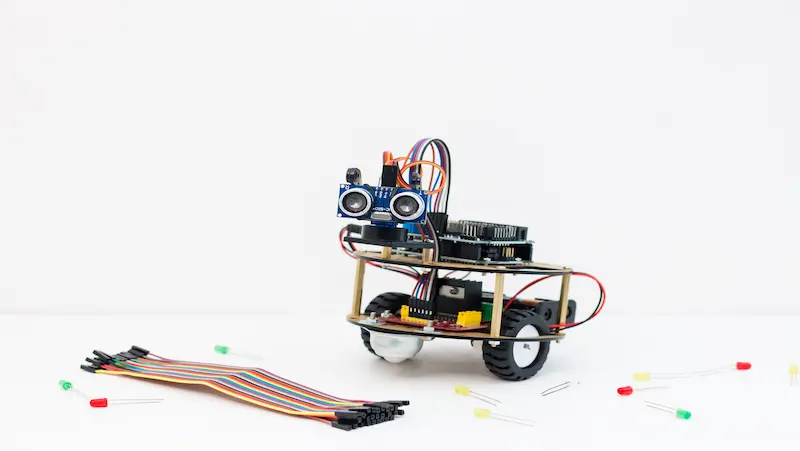
When it comes to learning robotics for kids, there are various resources available that can make the process fun and engaging. Online courses and tutorials are an excellent option for kids who prefer to learn at their own pace. Robotics kits are another great way to get hands-on experience and develop essential problem-solving skills.
Joining local robotics clubs or attending summer camps can provide opportunities for collaboration, mentorship, and learning from experts in the field. Educational toys, books, and magazines also offer a fun way to introduce young learners to robotics. With so many options available, kids can find a resource that best fits their interests and learning style.
Botball
Botball is an exciting robotics competition that offers a hands-on learning experience for middle and high school students. The program encourages students to develop coding, engineering, and teamwork skills as they build and program autonomous robots to compete in challenges that simulate real-world problems.
Botball also provides teacher training and curriculum resources to help schools integrate robotics education into their classrooms. Participating in Botball can open up opportunities for kids interested in pursuing careers in robotics and technology. With its focus on problem-solving, collaboration, and innovation, botball is an excellent way for kids to learn new skills while having fun.
Engineering and Robotics Learned Young (EARLY)
EARLY, an acronym for Engineering and Robotics Learned Young, is a program designed to introduce kids to engineering and robotics at a young age. This program offers hands-on activities that help children build and program their robots, which can be an excellent way to spark interest in STEM fields.
The EARLY program caters to students of all ages, from elementary to high school, providing them with age-appropriate learning materials. Parents and educators can also benefit from EARLY, as the program provides resources like lesson plans and teacher training materials that can be used to teach robotics in classrooms. With EARLY’s focus on problem-solving skills, critical thinking, and teamwork, it’s no wonder why this program is such a popular choice for parents looking to give their children the ultimate learning experience.
Free Robotics Tutorials for Kids by RootSaid
Learning robotics can be fun and engaging for kids to develop essential skills such as problem-solving, critical thinking, creativity, and teamwork. Kids of all ages and skill levels can easily access the free robotics tutorials RootSaid offers online.
These tutorials cover various topics, from basic programming concepts to advanced projects. With step-by-step instructions and videos, RootSaid’s tutorials are designed to be easy to follow and understand. By learning about robotics through RootSaid’s free tutorials, kids can gain valuable skills that will prepare them for future careers in STEM fields while having fun in the process.
Should robotics classes be included in school?
Introducing robotics classes in school can have numerous advantages for students. These classes allow kids to develop critical thinking, problem-solving, and creativity skills through hands-on experience. As technology advances, programming, and robotics have become crucial skills in various industries, making these classes even more valuable.
Furthermore, including robotics classes in the school curriculum can help engage students who might not be interested in traditional subjects like math or science and create a more well-rounded education. Introducing robotics classes in schools can have long-term benefits for students and the job market.
Pros and Cons of Including Robotics Classes in the School Curriculum
Integrating robotics classes into school curricula poses both advantages and disadvantages. Robotics education helps students develop critical thinking, problem-solving, and technical skills while fostering creativity, innovation, and teamwork. Teaching robotics in schools can also prepare students for future job opportunities in STEM fields and inspire them to pursue careers in technology and engineering.
However, including robotics classes in the school curriculum may require additional funding and resources, which could be challenging for some schools. Additionally, there might be a need for qualified teachers to teach the subject or disinterest among some students who may find it difficult to engage with the topic. Despite these challenges, introducing robotics classes into schools could create a more well-rounded education for students while advancing their technical knowledge and skillset.
Alternative Ways Your Child Can Learn Robotics

Learning robotics doesn’t have to be confined to a classroom setting. Your child can learn about robotics in numerous alternative ways, and these methods can be both fun and educational. Robotics kits are an excellent starting point for kids interested in building robots.
These kits come with instructions and all the necessary components and provide hands-on learning opportunities. Online courses that teach programming and building robots are also widely available.
Robotics camps for kids during summer breaks and after-school programs focused on robotics can provide students with valuable experience and knowledge, while robotics competitions offer a chance to showcase their skills. Encouraging kids to experiment with building robots independently can foster creativity and problem-solving skills.
After-School Clubs and Classes
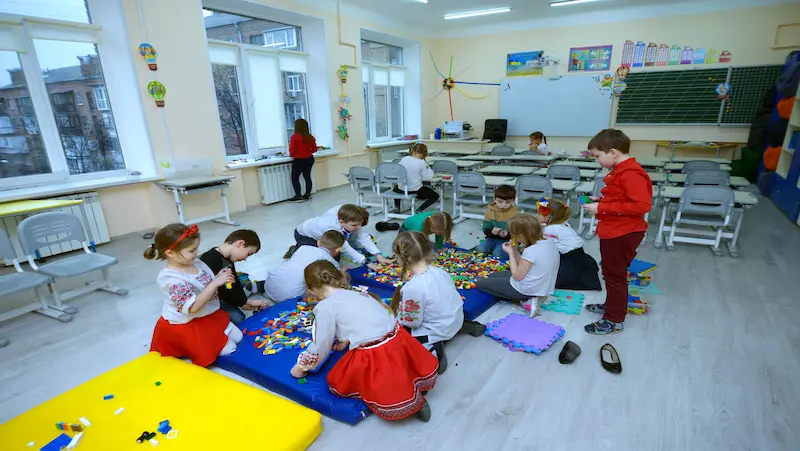
After-school clubs and classes are an excellent way for kids to learn about robotics in a structured environment. With the help of knowledgeable instructors, these programs give students practical experience.
Kids can learn programming, problem-solving, and teamwork skills while having fun. After-school clubs and classes offer access to specialized equipment and materials that may not be available at home. Parents can choose from various options, including community centres, schools, and private organizations. These programs are an excellent way for children to explore their interests in robotics while developing skills that will serve them well in the future.
Online Courses for Learning Robotics
Online courses are an excellent way to learn robotics for kids from the comfort of their own homes. These courses offer flexible schedules and convenient access to expert instructors, making them an ideal choice for busy families.
Additionally, many online courses are designed specifically for kids and offer interactive lessons that are both engaging and informative. Parents should carefully review course materials and monitor their child’s progress to ensure they get the most out of the learning experience. With online courses, kids can gain valuable programming skills while exploring the fascinating world of robotics.
Exciting Robotics Projects for Kids
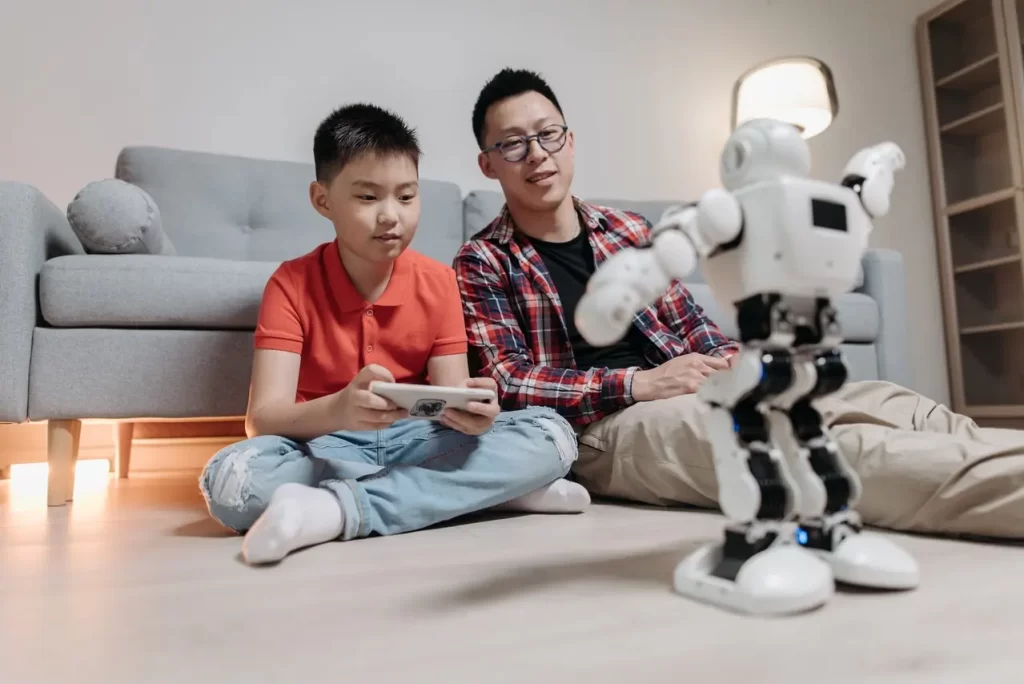
Robot Sumo – Robot Sumo is an exciting robotics project for youngsters that entails designing and constructing tiny robots that will engage in sumo-style wrestling matches. The goal is to create a robot that can use motors and sensors to push the adversary out of the ring. Children can learn about engineering, programming, and problem-solving as they create and improve their robots to outmaneuver their opponents.
Maze Solving Robot – Children can construct a robot that can navigate a maze independently by completing the project Maze Solving Robot. They will learn about sensors, including ultrasonic or infrared ones, that assist a robot in detecting impediments and making judgments so that it travels in the right direction. Children can learn algorithms and logical reasoning by programming the robot’s actions.
Robotic Arm – Constructing a robotic arm for a child is a fascinating project that allows them to learn about mechanical engineering and programming. They can build a robotic arm to pick up and move objects by connecting motors, gears, and joints. Children can programme the arm’s movements, developing their coding abilities and kinematics knowledge.
Line Following Robot – Children can construct a robot that follows a line using sensors to find and follow a predetermined path. The robot can detect the contrast between the line and the surface by using color or infrared sensors, and it may then modify its movements in response. This project teaches children the fundamentals of robotics, sensor integration, and coding logic.
Soccer Robot – A soccer robot project merges robotics and athletics by letting schoolchildren create soccer-playing robots from scratch. The robots that kids build can be programmed to move around the pitch, find the ball, and score goals. As students create tactics for their robots to compete against one another, this project improves cooperation, problem-solving, and programming skills.
Fun Activities to Learn Robotics for Kids
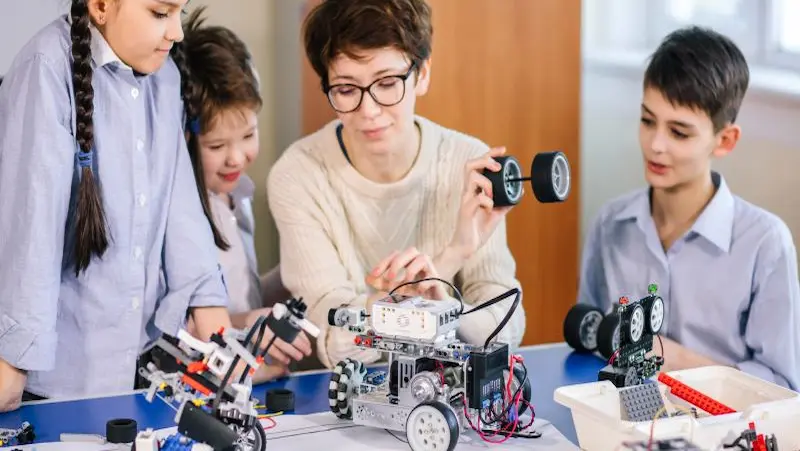
Kids’ problem-solving and critical thinking abilities can be developed by introducing them to robotics in an instructional and enjoyable way. Here are some fun robotics learning games for kids:
Robotics kits – Invest in kid-friendly robotics kits. Usually, these kits come with programmable microcontrollers, motors, sensors, and building blocks. Children can follow directions to assemble their robots, which they can then program to carry out specific tasks.
Coding challenges – Using visual programming languages like Scratch or Blockly, teach children the fundamentals of coding. Children can use these platforms to make interactive stories, games, and animations. They can also use block-based coding to control natural or virtual robots.
Robot race – Set up friendly events where children create and construct robots that compete in races. They can build their robots from components like cardboard, wheels, and motors. Kids are encouraged to consider design, mechanics, and problem-solving in their quest to build the quickest or most maneuverable robot.
Obstacle course – Create obstacle courses out of commonplace items like cups, cardboard tubes, and books. Children are challenged to program their robots to automatically explore the course, dodging hazards and crossing the finish line. In addition to teaching kids about sensors and decision-making systems, this activity improves their coding abilities.
Field trips and workshops – Investigate local robotics workshops offered by educational facilities, science museums, or labs. These opportunities introduce children to actual robots, live demonstrations, and knowledgeable instruction, piquing their interest and expanding their knowledge of robotics.
Robotics Kits for Kids
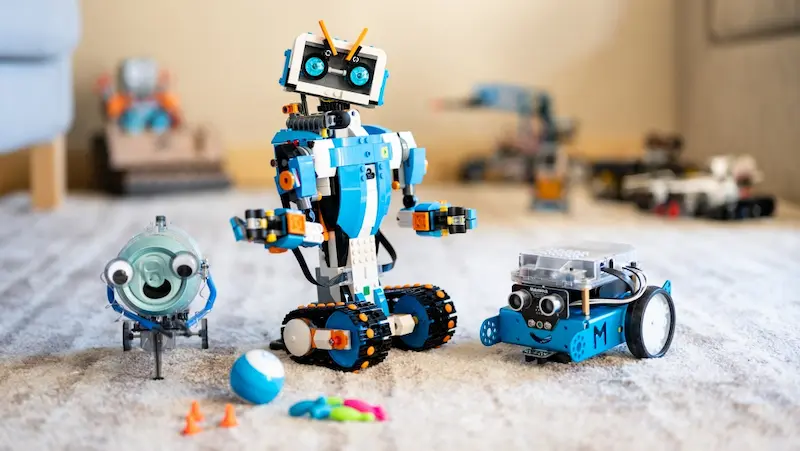
1. LEGO Mindstorms EV3
Features: motors, sensors, programmable bricks, and flexible building choices in a modular architecture.
Complexity: Variously difficult; suitable for ages 10+.
Suitable for: Future engineers and construction workers.
2. Dash and Dot Wonder Pack
Features: sensors, two robots, accessories, and Blockly coding.
Complexity: Suitable for children aged 6 to 12, emphasizing creativity.
Recommended for: Young inventors and programmers.
3. Ozobot Bit 2.0
Features: Pocket-sized robot, color-coding programming, and interactive games.
Complexity: Great for ages 6+ and beginners.
Recommended for: Budding coders.
4. Makeblock mBot
Features: Line-following, obstacle avoidance, drag-and-drop programming, and simple assembly.
Complexity: Suitable for 8 years old and up, with a rise in difficulty as abilities advance.
Recommended for: Young inventors and tinkerers.
Safety Tips for Working with Robotics Kits
1. Gear Up Like a Pro: Just like a superhero needs their suit, you need your safety gear. Slip on those safety glasses to shield your eyes from unexpected sparks or tiny flying parts. Trust me; it’s not just a fashion statement—it’s your robot-building armor.
2. Power Down Before Suiting Up: Before you start tinkering with your robotic creation, make sure it’s turned off and unplugged. This may sound like common sense, but it’s the golden rule of robotics. You don’t want any unexpected surprises while you’re knee-deep in wires.
3. Mind the Manuals: I get it—manuals can be a snooze-fest. But when it comes to your safety, they’re like treasure maps. Take a few minutes to read through them. You’ll discover hidden gems of information that can save you from potential boo-boos.
4. Keep It Tidy, Mate: Picture this: a cluttered workspace, wires snaking everywhere, and you searching for that elusive screwdriver. Chaos, right? A tidy workspace is not just for neat freaks; it’s your secret weapon against accidents waiting to happen.
5. No Multitasking in Robo-Town: Building a robot is no joke. When you’re in the zone, focus on one task at a time. Multitasking might sound impressive, but in the world of robotics, it’s a slippery slope to oops-town.
6. Respect the Voltage: Electricity is the lifeblood of your robot, but it can also give you a nasty shock. Always be mindful of the voltage and current your kit is working with. Better safe than sorry, right?
Exploring STEM Careers in Robotics

1. Discovering the Wonders of Robotics Careers
Have you ever wondered who makes those cool robots you see on TV or in movies? Well, it could be you! A career in robotics means you get to design, build, and even program robots to do all sorts of incredible things. From exploring the depths of the ocean to helping doctors in surgeries, the possibilities are endless.
2. The ABCs of STEM
Now, before we jump into the fun stuff, let’s talk about STEM. What’s STEM? It stands for Science, Technology, Engineering, and Math. These are like the superheroes of education, and they open doors to super cool careers. Robotics is right at the heart of this, bringing together all these subjects for an epic adventure!
3. Finding Your Passion
There are different types of jobs in robotics, so you don’t have to be a tech genius to join in. If you love drawing, you could be a robot designer. If you enjoy solving problems, becoming a robotics engineer might be your thing. And if you like telling robots what to do, well, you could be a programmer – the boss of the bots!
4. The Journey to Becoming a Robotics Superstar
So, how do you get there? First off, stay curious. Ask questions, tinker with things, and don’t be afraid to make mistakes. Remember, even the pros started as beginners. Next, focus on your math and science classes. These will be your trusty sidekicks on your journey to becoming a robotics superstar.
5. Clubs, Classes, and Competitions
Joining a robotics club or taking classes can be a game-changer. It’s like joining a team of fellow adventurers who share your love for robots. Plus, there are competitions where you can showcase your skills and even win cool prizes. Who knows, you might build the next robot sensation!
6. Dream Big, Work Hard
In the world of STEM and robotics, dreaming big is the norm. Maybe you’ll design a robot that helps clean up our oceans or creates art that wows the world. Whatever your dream, remember that hard work and determination are your best allies. Every small step you take brings you closer to your big dreams.
Conclusion
Robotics for kids is an excellent way to introduce your child to technology and coding. It improves their problem-solving skills, their ability to work in teams, and their creativity. Learning robotics can be a fun experience for kids, as it helps them develop a passion for science and engineering from an early age.
The introduction of robotics programming for kids involves interactive and practical learning opportunities that enhance their abilities and knowledge in programming robotic systems.
If you want your child to learn the concepts of robotics and coding, various platforms cater to different age groups. Check out our comprehensive list of educational robotics platforms for kids, including Arduino Nano, BBC micro: MicroRaspberry Pi, Botball, EARLY, and free tutorials by RootSaid.
You’ll also learn about alternative ways your child can learn robotics if you can’t find a school that offers robotics classes. Join hands with us today in making the future generation tech-savvy!
Check out our online robotics courses for kids, providing them with a flexible and accessible avenue to explore and participate in hands-on robotics learning.
Frequently Asked Questions
Research suggests that children as young as 5-7 years old can begin learning robotics with age-appropriate kits and activities that promote fundamental programming and problem-solving skills.
2. How do I start my child in robotics?
To start your child in robotics, consider enrolling them in robotics clubs or classes. Provide them with age-appropriate robotics kits, and encouraging their curiosity and exploration in the field of robotics.
3. What is a robotics course for kids?
A robotics course for kids is an educational program designed to introduce children to the principles of robotics and teach them skills. Such as building, programming, and controlling robots through hands-on activities and projects.
4. What is the best robot for a 6-year-old?
The best robot for a 6-year-old would depend on their interests and educational needs. However, some popular options include the Cozmo robot, Dash and Dot robots, and the LEGO Boost Creative Toolbox.
5. What is coding for 7 year olds?
Coding for 7-year-olds is a simplified introduction to computer programming that uses age-appropriate tools and concepts. It focuses on developing basic problem-solving skills and logic through interactive activities and visual programming languages.
6. Where to start learning robotics?
Start learning robotics by gaining a solid foundation in programming, electronics, and mechanics. Explore online resources, take courses, and consider joining robotics clubs or attending workshops to gain hands-on experience.
7. Why should kids join robotics?
Kids should join robotics to develop problem-solving skills, enhance creativity and foster teamwork. They can also learn about technology in a practical and engaging way, preparing them for future careers in STEM fields.
8. How do I teach my 7 year old robotics?
Start with age-appropriate robotics kits or toys, introduce basic concepts like sensors and motors, and encourage hands-on exploration. Use online resources, books, and tutorials to support learning. Join local robotics clubs or workshops for additional guidance and engagement.

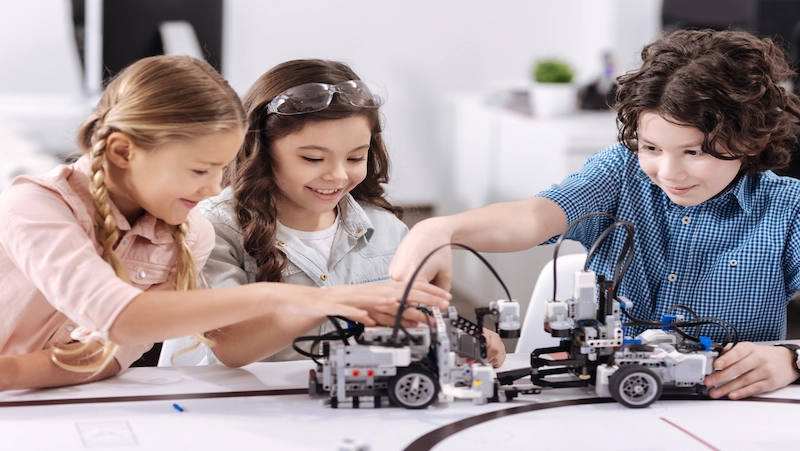
 We are an army of educators and passionate learners from BrightChamps family, committed to providing free learning resources to kids, parents & students.
We are an army of educators and passionate learners from BrightChamps family, committed to providing free learning resources to kids, parents & students.





